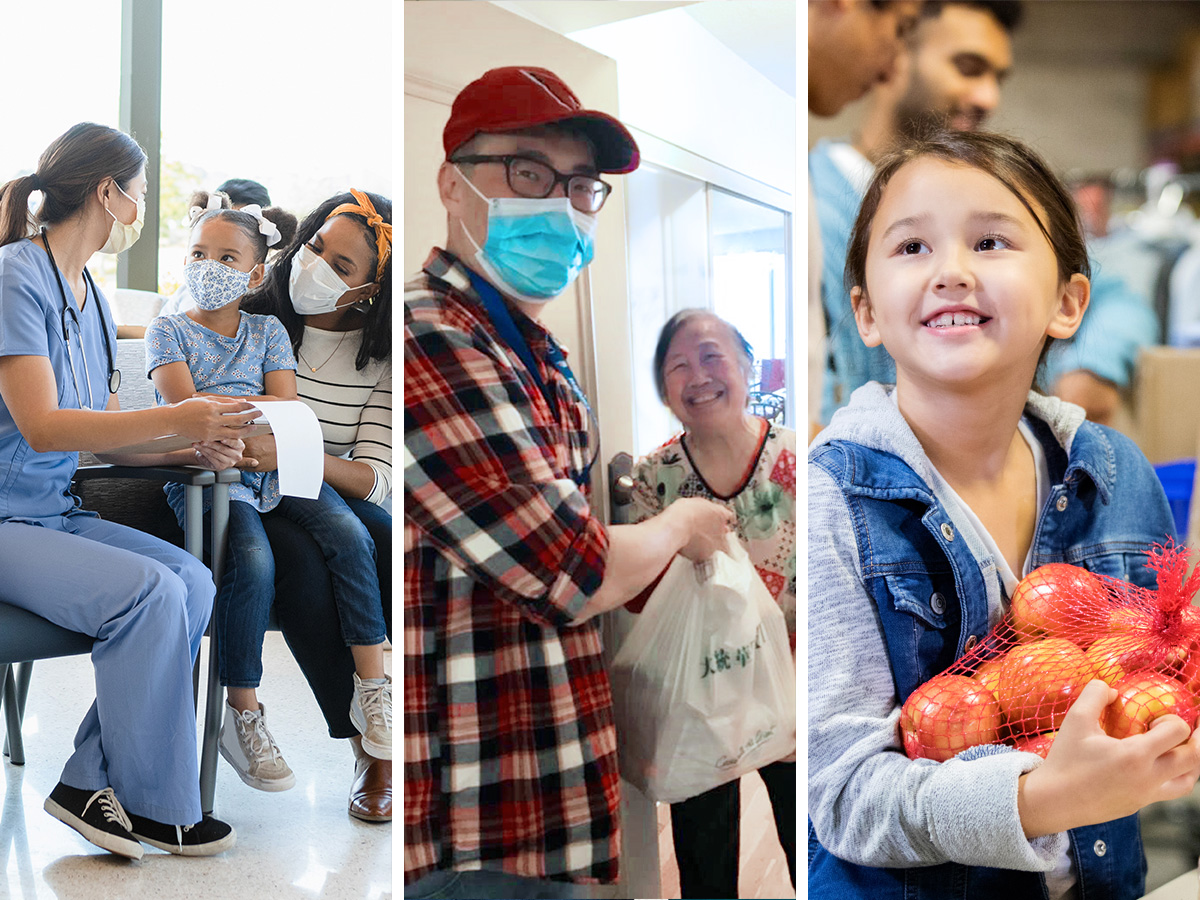Healthier communities: Nurturing physical and mental wellness
Innovation Issue 39: Spring 2024
Community-led health care through the pandemic and beyond
Policy and Perspective
Community-led health care through the pandemic and beyond
Centre photo courtesy of Carefirst Seniors and Community Services.
An innovative pandemic-era program meant to help stop the spread of COVID-19 has proven to be an effective model for providing accessible health care and supports to the residents of some of Ontario’s most at-risk communities.
Research by Janet Lum, a professor in the Faculty of Arts at Toronto Metropolitan University (TMU), found that the Ontario Government's High Priority Communities Strategy (HPCS) accomplished major success in diverse and marginalized communities by taking a collaborative, hyper-local and culturally relevant approach to reaching those in need. The HPCS began in December 2020, with the government providing a total of $12.5 million to 15 – and later 17 – local lead agencies in Ontario communities hit hardest by COVID-19. The lead agencies took on a facilitative role, engaging and coordinating with community partners to deliver education, tests, vaccinations and combined health and social care interventions. The lead agencies had the freedom and flexibility to provide what was needed most by those living in their communities.
“This funding is a small part of Ontario’s large health budget, and these 17 lead agencies were able to do what the Ontario government and Ontario Health had not been able to do,” said professor Lum. “They reached right down into their communities to provide primary health care for their populations hit hardest by the pandemic.”
Improving access in South-East Markham
Professor Lum analyzed the initiative of Carefirst Seniors and Community Services, the lead agency for the community of South-East Markham, to learn how this model could be applied more widely post-COVID. South-East Markham encompasses those who are low income, racially diverse, from newcomer communities and who had high rates of COVID-19 positivity. Even before the pandemic, residents in these neighbourhoods experienced a higher burden of illness with lower access to care. Barriers to care included not having a family doctor, the inability to take time off work to travel on public transit to see a doctor in another community, language barriers or lack of health insurance.
Carefirst worked with more than 35 partner organizations, including hospitals and primary care clinics, recreation and daycare centres, faith and cultural organizations, and organizations offering support services for mental health, housing, employment, at-risk youth, new immigrants and more. Services provided during the pandemic included arranging vaccination appointments for families, connecting residents to primary care doctors, delivering groceries to residents with COVID-19 and, in a few cases, helping with rent payments for people who had been laid off or missed work while sick with COVID-19.
Professor Lum worked with University of Toronto professors Paul Williams and Freida Chavez to conduct surveys and focus groups with front-line staff who provided services. The researchers found the HPCS enabled the delivery of an integrated continuum of care that included both traditional components of health care and broader social supports to address the social determinants of health. This collaborative approach helped organizations work together to fill gaps in care and to reach more people in the community.
A model for future care
In May 2023, professor Lum and the research team presented their findings at a symposium titled Building Healthier, More Equitable Communities: Moving Ontario’s High Priority Communities Strategy from the Margins to the Mainstream in an effort to bring more attention to the made-in-Ontario health-care model. The symposium brought together researchers, health-care organizations and the Ontario Ministry of Health to discuss lessons learned from the HPCS.
While the HPCS is set to end in 2024 as the impact of COVID-19 on daily life wanes, it has inspired the continuation of services. For example, Carefirst has already pivoted to address other health equity and population health challenges in its community, such as women’s preventive health, health screening and education and mental health.
“One of the most significant impacts of this program is that residents in marginalized communities now know that they can go to the lead agency to get connections for broader well-being and health-care supports,” said professor Lum. “HPCS offers a proven ‘made-in-Ontario’ model for achieving key health priorities and advancing the work of Ontario Health Teams.”

